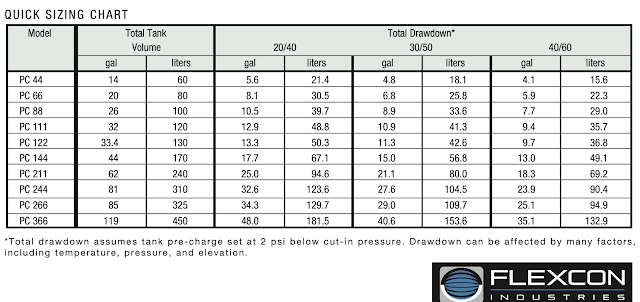How to Size A Pressure Tank For Your Water System
Is pressure tank size important? The answer is ABSOLUTELY YES!
Pressure tank sizing is essential to the life expectancy of your pumping system if you want maximum life of your equipment and reduced power consumption.
Did you know that an undersized tank can cause premature pump failure? This issue can be minimized with a correctly sized tank. When a pressure tank is correctly sized it reduces the changes of short-cycling of the motor. Short-cycling means the motor turns on and off rapidly. This causes overheating and overuse of manufacturer specified start cycles. Additionally, it increases the power consumption of your motor.
So how is your pressure tank activated? When water is used in the system the tank evacuates its stored water and when the bladder is emptied the pressure switch is triggered. The pressure switch sends a signal to the pump to turn on and run when the low pressure setting on the switch is reached. The larger your pressure tank, the longer the drawdown of stored water will last. A longer drawdown = less cycling of your motor. According to most manufacturers a minimum one minute run time is recommended. A longer run time may be needed for motors that have larger horsepower. Check out this chart for commonly used pressure tank sizes:




Comments
Post a Comment